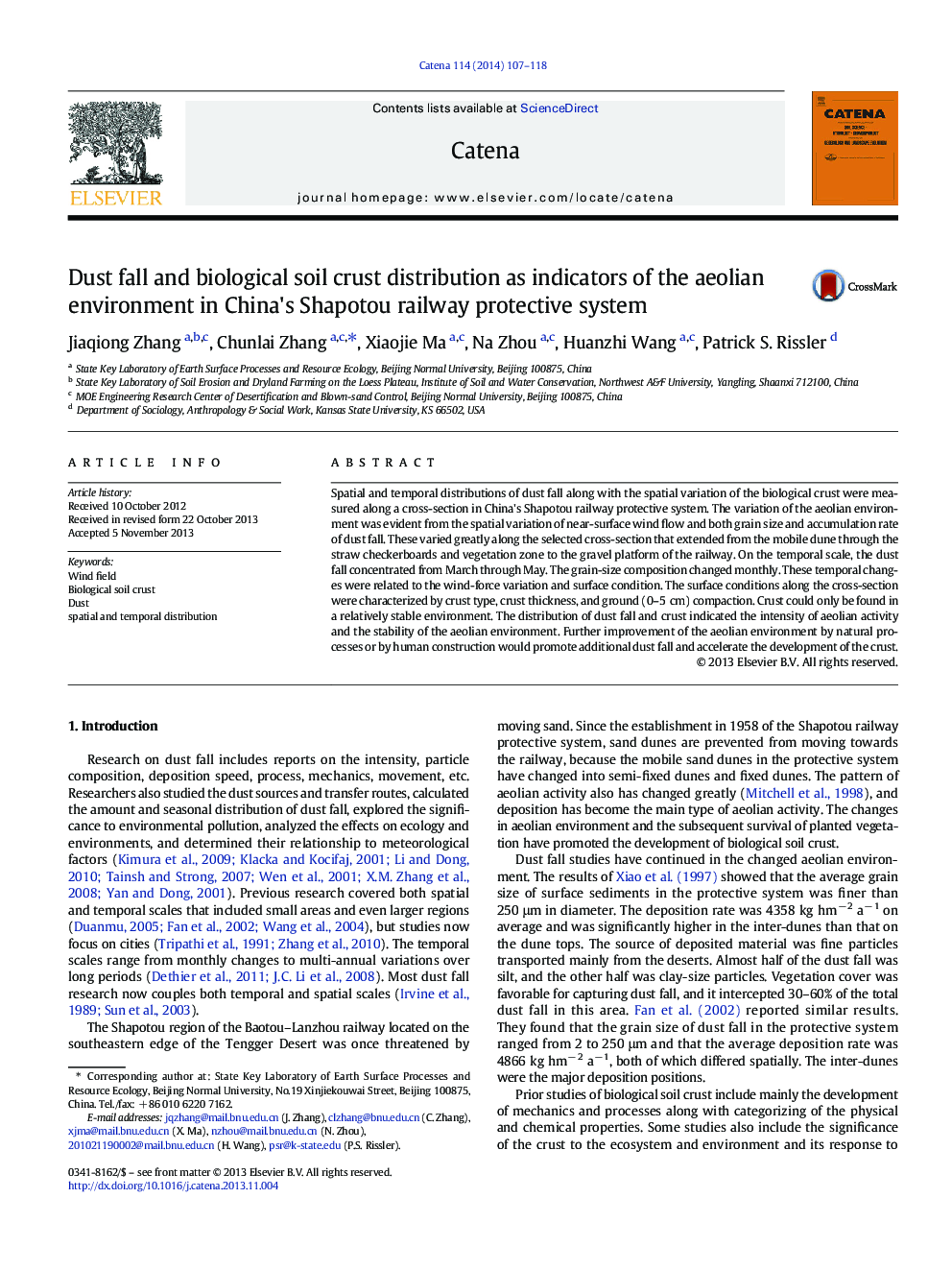| Article ID | Journal | Published Year | Pages | File Type |
|---|---|---|---|---|
| 4571496 | CATENA | 2014 | 12 Pages |
•We analyzed the distribution of dust fall and crust in a railway protective system.•Grain size of dust fall and physical features of crust changed along a cross-section.•Near-surface wind field, vegetation and terrain variation control their distribution.•Their distribution implies the aeolian environment change in the protective system.
Spatial and temporal distributions of dust fall along with the spatial variation of the biological crust were measured along a cross-section in China's Shapotou railway protective system. The variation of the aeolian environment was evident from the spatial variation of near-surface wind flow and both grain size and accumulation rate of dust fall. These varied greatly along the selected cross-section that extended from the mobile dune through the straw checkerboards and vegetation zone to the gravel platform of the railway. On the temporal scale, the dust fall concentrated from March through May. The grain-size composition changed monthly. These temporal changes were related to the wind-force variation and surface condition. The surface conditions along the cross-section were characterized by crust type, crust thickness, and ground (0–5 cm) compaction. Crust could only be found in a relatively stable environment. The distribution of dust fall and crust indicated the intensity of aeolian activity and the stability of the aeolian environment. Further improvement of the aeolian environment by natural processes or by human construction would promote additional dust fall and accelerate the development of the crust.
